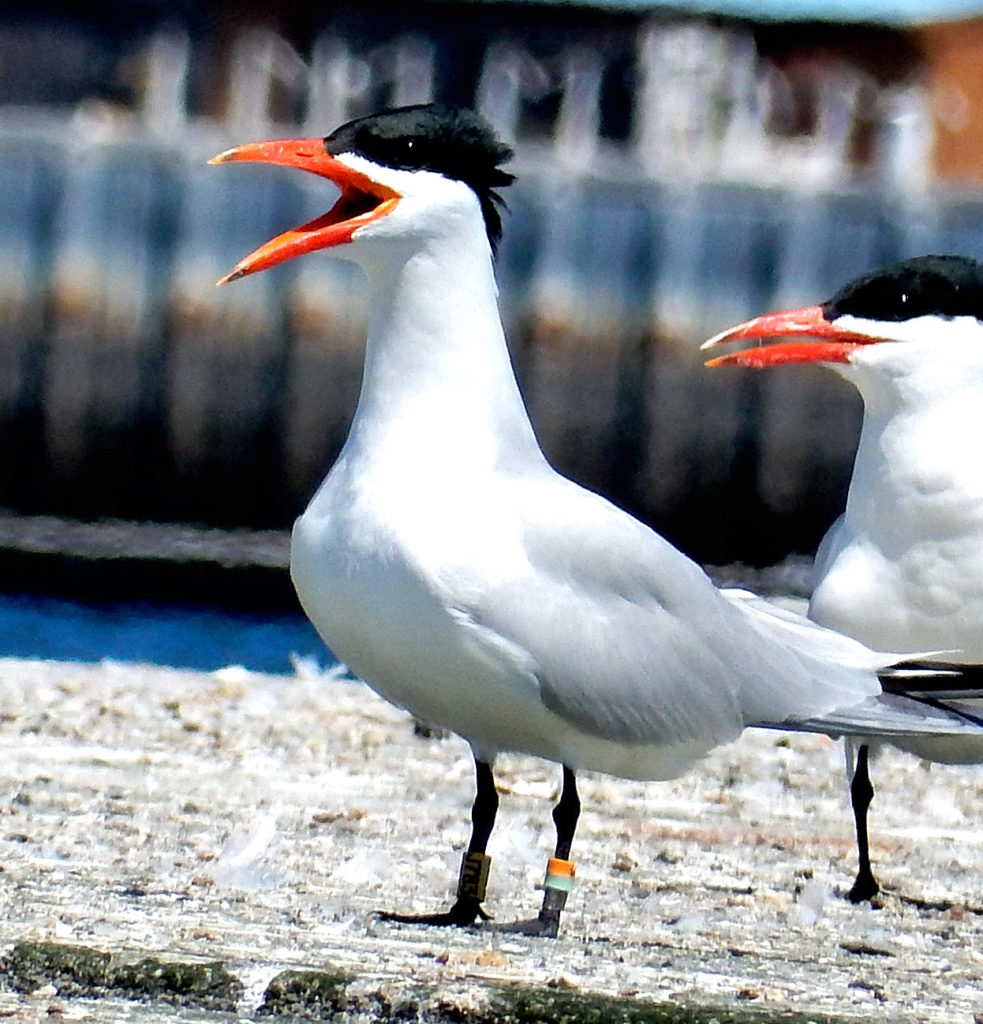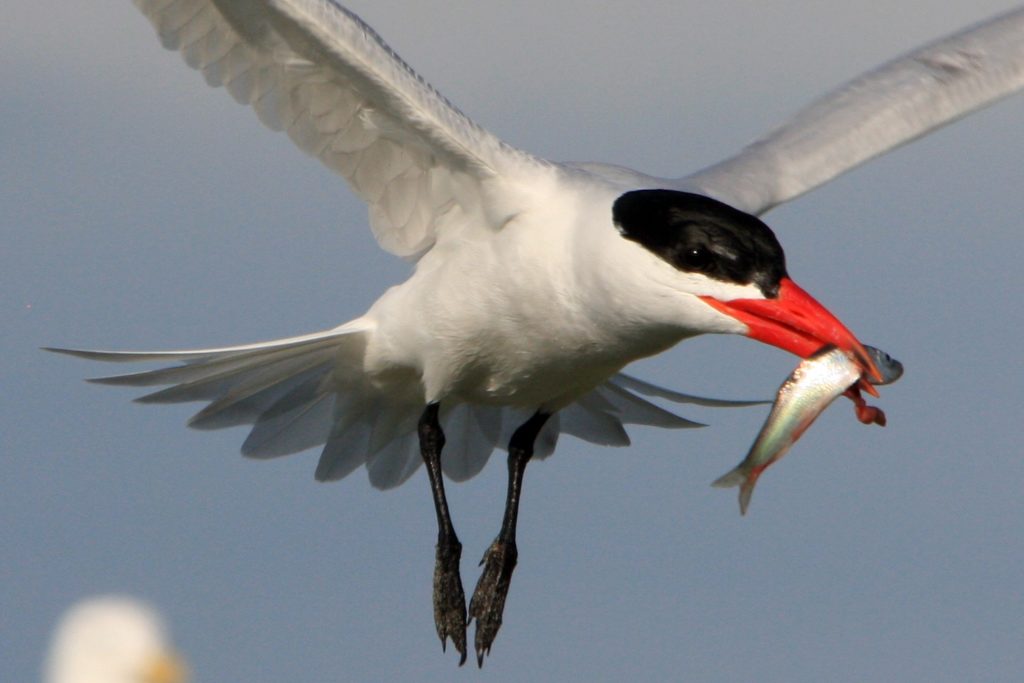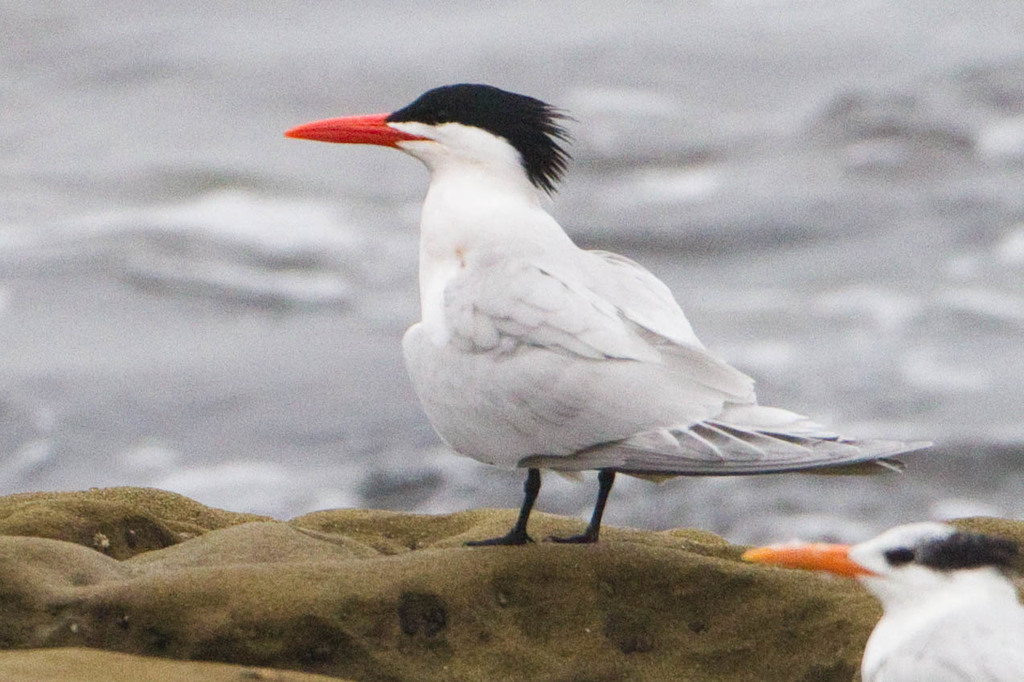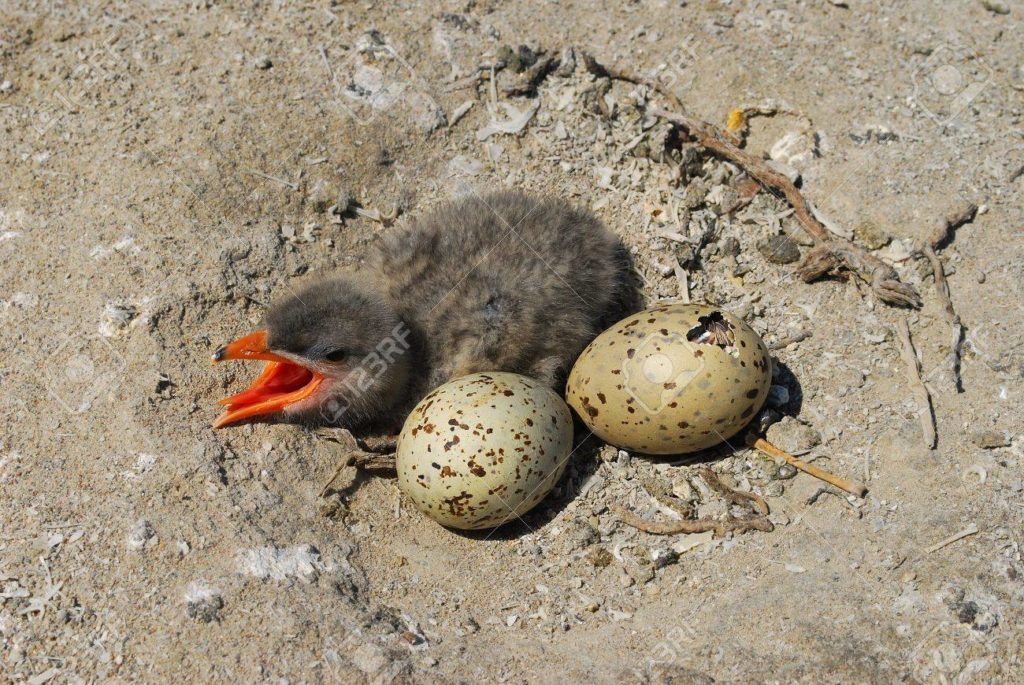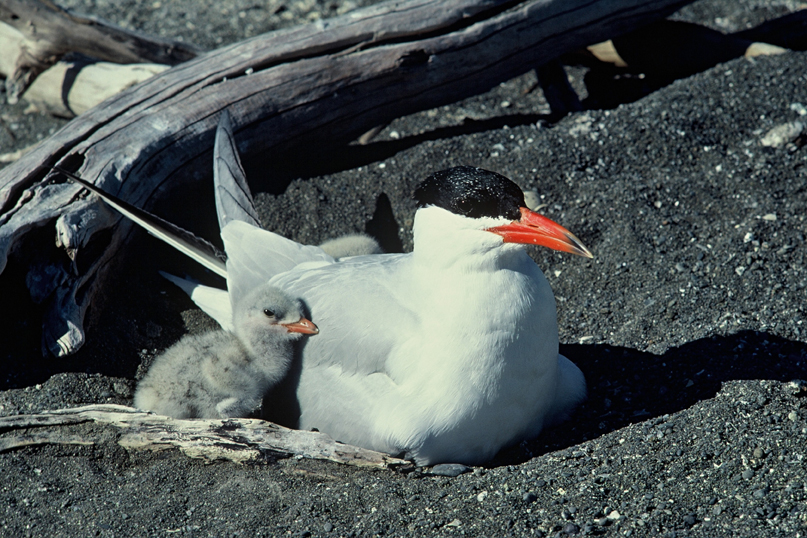by Doug Becker

There are 14 species of terns that breed regularly in North America. Terns vary in size, but all have a distinctive look and presence. The largest and most regal of them all, however, is the Caspian Tern. Even though they associate with other terns and gulls, any birder with a good pair of binoculars can’t miss the Caspian Tern within the group. They’re large, sport a serious black cap, and a long, fiery-red, razor sharp bill. Very regal!



Caspian Terns are not rare or uncommon. In fact, they’re found all over the world. In North America their breeding areas are small and localized. Their breeding colonies are in Canada, our far west, and northwest. Night time migration, however, takes them over most of the U.S. and down to the Carribean Islands, the Gulf coast, and into Mexico. There, larger numbers live as permanent residences. An example of the Caspian Terns’ small and localized breeding colony is a small artificial island in the Columbia River between Washington and Oregon. This is the largest colony of Caspian Terns in the world, and home to more than 6000 breeding pairs each year. Other than avoiding the Rocky and Appalachian Mountain ranges, these stately terns are available to be seen by most of us. Caspians feed in both freshwater and saltwater, so during their migration, certain rivers and lakes throughout the country will be host to the stately and regal Caspian Terns.


When scanning groups of shorebirds, look for the largest tern. The Caspian Tern will be the biggest and bossiest. After all, they are the biggest tern in the world. Their call is deep and raspy. Some call it rolling and distinctive. Caspians have a jet black cap and a small crest during breeding. After breeding season, their black cap becomes slightly streaked with white. Their bill is long and heavy, bright red with a black tip, and is a main feature for birders’ quick identification. Their back and upper parts are light gray, and they are bright white below except for black on the underside of the wingtips. For a tern, their long pointed wings are quite broad and can span over 4 feet. The length of their body is 20-23 inches long. The Caspian Tern is indeed the biggest tern in the world! Put ’em on your list to see.

Typical for most shorebirds, Caspian Terns’ housing is on the ground and quite simple. Either male or female will select the nest’s location, and both birds help build the nest. A little bit of nest scraping on sandy, shelly, or even dirt where there is little vegetation seems to do the trick. Add to that some leaves or a bit of dried vegetation for comfort, then a surround of shell fragments, pebbles, or sticks, and the nest scrape nest is finished. Simple nests may be just right for the Caspians, because any predator disturbance can cause an entire colony to pack up and move to another location where new nests are, once again, quickly built. Nests average just over 7.5 inches across, 1.5 inches tall, and 1.8 inches deep. This is just enough to to accommodate their one brood per year of 1-3 eggs. After 25-28 days of incubation, the mother sends them off to the world after only 2-3 days of nesting.
Caspian Terns are aerial divers. With fish being their main diet, they hunt and feed by flying 10-100 feet above the water with their bright red bill pointing downward. When prey is spotted, a dramatic dive straight down is made and the Caspian submerges in the water for a moment before reemerging with dinner. Seeing groups of Caspians do their aerial dives is a spectacle for birders to enjoy. Though Caspians are mainly fish eaters, they are not picky. They’ll eat crayfish, large insects, small mammals, birds, eggs, salamanders, and even dead fish on the shore. Further, the biggest tern won’t hesitate to chase smaller terns and force them to give up their catch. Oh well, Caspian Terns are not the only kleptoparasites (pirates) … Bald Eagles are forever chasing Ospreys to make them drop their prey. I guess size DOES matter!
Caspian Terns are not around for most of us except during migration. Then, they can be found on large rivers and lakes across the country. It may be a wise idea to ask your local Audubon if they know specific bodies of water near you where Caspians frequent each year. My first observation of Caspian Terns was in the upper Mississippi River valley. In the fall of the year the sandbars were filled with migrating shorebirds, and the Caspians stole the show. I’ve found that by knowing the Caspian, it opens the door to getting to know many of the other terns. Don’t miss out on seeing the regal Caspian Terns migrating through your area. See ya out there!
